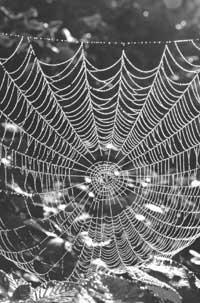Amama fabric made by mammal cells

Because the thread produced by spiders is extremely resistant and elastic, numerous attempts have been made to obtain similar material. But so far they have not been very successful. However, according to the work published in the journal Science, genetic engineering has taken an important step in Canadian biotechnology laboratories Nexia.
Scientists have transferred the genes that encode the proteins of the web to the DNA of the mammary and renal cells of the cows hamsters. Both types of cells secrete proteins out of the cell easily stored. Then, with these proteins, the thread is drained, removed from the aqueous solution and injected into methanol. Although the yarn obtained is not as flexible as that of the spider, it is believed that artificial tendons and moorings can be built. On the other hand, the U.S. Army also has a lot of interest, since it has occurred to them that it would be ideal to perform resistant and light armor.





